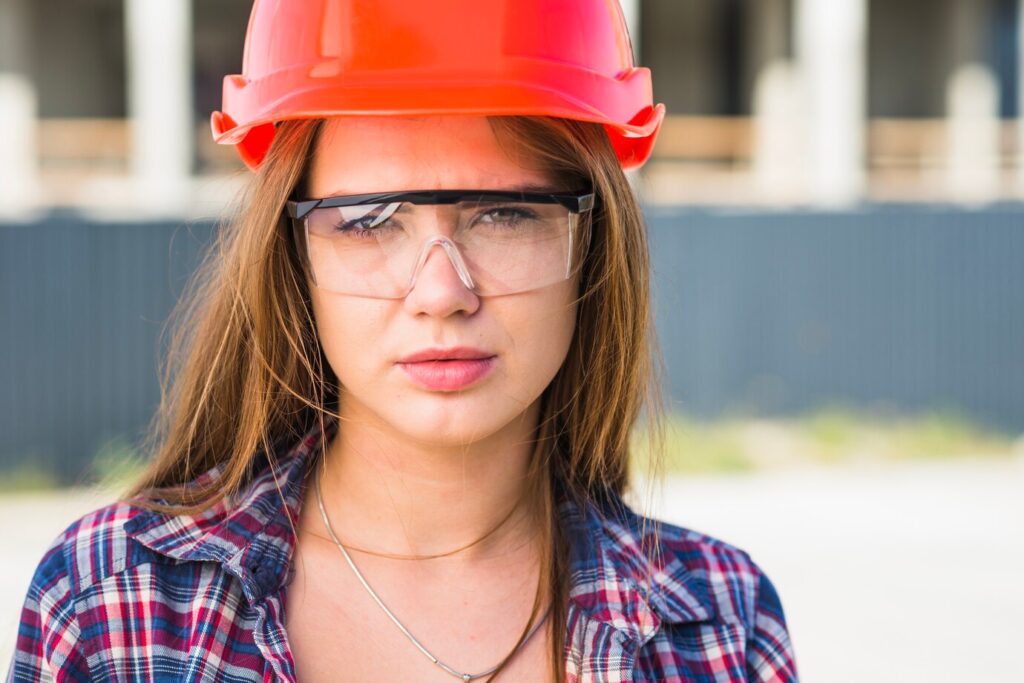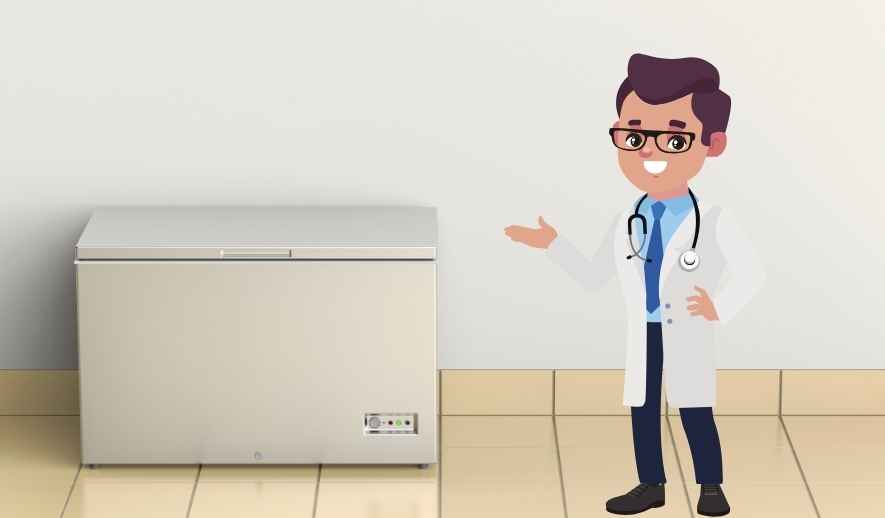Why Eye Safety Matters More Than Ever
In an age where technology has evolved and workplace safety is more emphasized than ever, protecting our vision is crucial. Every day, thousands of eye injuries occur, many of which could be prevented with the use of proper safety eye glasses. Whether you’re working in construction, laboratories, or even at home doing DIY projects, having the right protective eyewear can mean the difference between a close call and permanent vision loss.
Safety glasses aren’t just a workplace accessory—they’re a vital line of defense. With the modern-day rise in industrial innovation and high-risk occupations, eye hazards are now more unpredictable and varied. Flying debris, chemical splashes, UV radiation, and even digital eye strain are serious risks. This is where prescription safety eye glasses and full eye protection safety glasses step in to save the day.
Let’s explore the different types, features, and the best options available in 2025 to help you find the perfect fit for your lifestyle or profession.
Safety Eye Glasses
What Are Safety Eye Glasses?
Safety eye glasses are specifically designed to protect the eyes from hazardous environments. Unlike regular eyeglasses, these are built with high-impact materials and often comply with safety standards set by regulatory bodies such as ANSI (American National Standards Institute) and OSHA (Occupational Safety and Health Administration).
They come in a variety of styles: goggles, wraparound glasses, and full-face shields, each catering to different protective needs. Their purpose is not just to protect, but to offer clarity, comfort, and compatibility with other protective gear like helmets and earplugs.
Key Features of Modern Safety Glasses
- Impact Resistance: Built with shatterproof polycarbonate lenses.
- UV Protection: Many come with built-in UV filters.
- Scratch-Resistant Coating: Enhances longevity and clarity.
- Anti-Fog Technology: Essential for humid or fast-paced environments.
- Comfortable Fit: Adjustable nose pads, lightweight frames.
These glasses aren’t just about function anymore—they also focus on style and comfort, encouraging consistent wear.
Common Misconceptions
Many believe safety glasses are bulky, unattractive, or only necessary in industrial environments. But in reality, they’re now stylish, versatile, and used even in medical, tech, and educational fields. There’s a significant shift toward integrating safety with daily-use eyewear, especially in the era of digital eye strain.
Prescription Safety Eye Glasses
Why Prescription Options Are a Game Changer
Imagine squinting through blurry vision while trying to handle heavy machinery. Not safe, right? That’s why prescription safety eye glasses are essential for workers who require both visual correction and protection.
They eliminate the need for wearing glasses under goggles—a major discomfort for many. With custom lenses, you get the best of both worlds: crystal-clear vision and robust eye protection.
Combining Vision Correction with Protection
Modern prescription safety glasses are engineered to accommodate any vision prescription. They’re available in:
- Single Vision
- Bifocal / Progressive Lenses
- Transition Lenses
This integration ensures that individuals don’t compromise on eye safety while managing visual impairments.
Types of Lenses Available
You can choose lenses based on your activity and work environment:
- Polycarbonate: Lightweight and impact-resistant.
- Trivex: Offers higher optical clarity.
- Photochromic: Adjusts to lighting conditions.
- Anti-reflective Coated: Reduces glare for screen-heavy jobs.
Each of these contributes to a better visual experience, tailored to specific occupational hazards.
Safety Eye Glasses Prescription
How to Get the Right Fit
Your safety glasses must fit snugly without causing discomfort. A loose fit allows particles in; too tight can cause pressure headaches. Getting prescription safety glasses professionally fitted ensures they serve both safety and comfort.
Eye Exams and Safety Requirements
Before ordering, you’ll need an updated prescription. Optometrists often provide safety-specific prescriptions based on your work environment. Be sure to mention exposure to chemicals, dust, or radiation.
Working With Optometrists and Employers
Some employers provide safety eyewear programs in partnership with optometrists. They may even cover part of the cost. Always ask your HR or safety officer about eyewear reimbursement policies.
Eye Protection Safety Glasses
Full Coverage Designs
Eye protection safety glasses are engineered to shield the eyes from every angle. Full-coverage designs, such as wraparound styles or those with side shields, offer comprehensive protection against debris, chemical splashes, and other airborne hazards.
Impact-Resistant Materials Explained
High-quality safety glasses use materials like polycarbonate and Trivex for their lenses and frames. These materials provide exceptional durability and resistance against breakage, which is crucial in hazardous workplaces.
Comparing Polycarbonate vs. Trivex Lenses
- Polycarbonate: More affordable, slightly less optical clarity, extremely impact-resistant.
- Trivex: Slightly higher cost, better clarity, still impact-resistant, lighter weight.
The choice between the two often comes down to personal preference and job demands.
Best Eye Safety Glasses
Top Brands in 2025
- Wiley X
- 3M
- Bolle Safety
- Uvex by Honeywell
- Guardian Safety Glasses
These brands have consistently delivered on innovation, durability, and compliance with safety standards.
Features to Look for
- ANSI Z87.1 Certification
- Anti-fog and anti-scratch coatings
- UV protection
- Comfortable and adjustable frames
- Compatibility with prescription lenses
Certifications and Standards (ANSI, OSHA)
Ensure that any eyewear you purchase complies with ANSI Z87.1 and any relevant OSHA workplace requirements. These certifications validate the impact resistance, lens coverage, and frame durability of the glasses.
Full Eye Protection Safety Glasses
Wraparound and Side Shield Benefits
Full eye protection safety glasses provide maximum coverage around the eyes. Wraparound designs and detachable side shields protect against lateral projectiles, making them ideal for environments like construction sites, woodshops, and chemical labs.
Importance in High-Risk Industries
Industries such as welding, carpentry, and chemical handling demand full protection due to high exposure to flying debris, sparks, and harmful fluids. Choosing the right style significantly reduces the risk of eye injury.
Fog-Resistance and Ventilation Technologies
High-performance glasses now come with fog-resistant coatings and built-in ventilation. This prevents condensation and maintains clear visibility, even during intense physical labor.
Work Safety Glasses
Tailoring to Different Jobs
Different professions have different needs:
- Construction Workers: Need impact protection and UV resistance.
- Lab Technicians: Need splash protection and anti-fog lenses.
- Office or IT Workers: May need blue light filtering safety glasses.
Heavy Industry vs. Office Lab Environments
While factory workers may need rugged, wraparound glasses, office labs might be better served with lightweight frames and lens coatings tailored for computer use or chemical splashes.
Choosing Between Clear, Tinted, and Polarized Lenses
- Clear: Indoor use, lab environments.
- Tinted: For outdoor use and sunlight protection.
- Polarized: Reduces glare—great for outdoor tasks near water or reflective surfaces.
The Importance of Eye Safety at Work
Real-Life Accident Statistics
According to the CDC, over 2,000 U.S. workers sustain eye injuries on the job every day. The majority of these are preventable with the proper use of safety eyewear.
How Proper Glasses Reduce Injury Risks
When the correct safety eyewear is used consistently, the risk of serious eye injuries drops dramatically. Protective glasses can shield against 90% of serious eye injuries, as reported by the American Academy of Ophthalmology.
How to Maintain Safety Eye Glasses
Cleaning and Storage Tips
- Clean daily with a microfiber cloth and lens-safe solution.
- Avoid paper towels or clothing, which may scratch the lenses.
- Store in a protective case to avoid damage.
When to Replace Your Safety Glasses
Replace them if you notice:
- Cracks or deep scratches on lenses
- Loose or damaged frames
- Fogging or reduced visibility despite cleaning
FAQs
Q1: Can I get prescription lenses in any safety glasses frame?
No. Only certain frames are compatible with prescription lenses. Always verify with your provider or optometrist.
Q2: Are all safety glasses ANSI certified?
Not necessarily. Check for the ANSI Z87.1 marking on the frame or lens.
Q3: How often should I replace my safety glasses?
Replace them immediately if damaged or every 1–2 years based on usage and condition.
Q4: Do safety glasses protect against blue light?
Some safety glasses offer blue light filters—ideal for screen-heavy jobs or digital environments.
Conclusion
Safety eye glasses are more than a requirement—they’re an investment in your health and well-being. Whether you’re working in a high-risk industrial setting or spending hours in front of a screen, choosing the right pair can protect your eyes and enhance performance.
With modern advancements in comfort, lens technology, and prescription integration, there’s no reason not to wear safety glasses tailored to your job and lifestyle.
Start protecting your vision today with top-rated, certified safety eye glasses.
Explore leading brands like Wiley X, Guardian Safety Glasses, and more to make a wise, protective choice in 2025.



